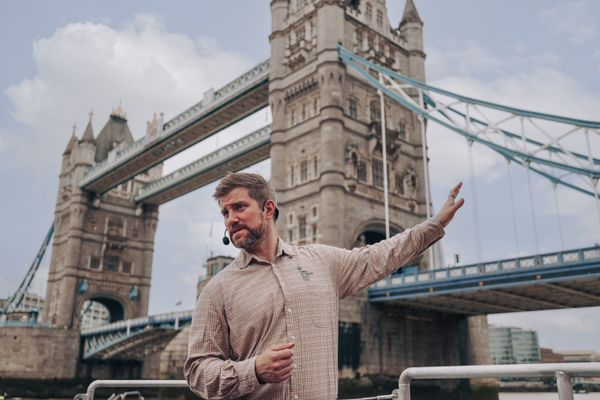Jerusalem ready to offer a big break
- Richard

- Jun 28, 2019
- 3 min read
Jerusalem is shedding its image of a city that appeals to mainly religious pilgrims and is now a top city-break destination with a line-up of world-class attractions, says the destination’s tourism boss.
Eli Nahmias, Director – Incoming Tourism and International Relations for the Jerusalem Development Authority, hosted a trade event in London this week to highlight the ‘new Jerusalem’ and recent developments in the city.
These include a high-speed rail line between Ben Gurion Airport in Tel Aviv and Jerusalem city center, which opened late last year. A billion-pound project it links Israel’s two main cities in around 20 minutes.
Eighteen new hotels are scheduled to open in 2019 and a major new attraction, the Museum of Tolerance should be welcoming visitors by the year’s close.
“For a long time the view of Jerusalem was very one-dimensional: that it is a holy city for religious visitors but lacked appeal for more mainstream tourists. But the process to change that image started 10 years ago when the responsibility for tourism moved from the municipality to the Jerusalem Development Authority (JDA),” said Nahmias.
“Now increasingly we are recognised as an international destination brimming with cultural attractions, top hotels and museums, arts, nightlife and a calendar of great events,” he added.
Jerusalem’s culinary scene is also booming, with ‘chef-restaurants’ opening at a rapid rate.
Israeli chefs such as Yotam Ottolenghi (who was born in Jerusalem but doesn’t have a restaurant there) and Assaf Granit (a Jerusalem local but with several eateries in the city) have put the country’s gastronomy scene on the map by blending ancestral traditions (both Eastern and Western), with eclectic modern creations.
“Jerusalem’s chefs are some of the best in the world and in the past few years, our fabulously creative fusion cuisine has been writing headlines,” said Nahmias.
The forthcoming Museum of Tolerance – started but not finished by Frank Gehry – will be similar to the Museum of Tolerance in Los Angeles. It is being developed by the Simon Wiesenthal Center with the objective of ‘promoting unity and respect among Jews and people of all faiths’.
Visitors should also factor in the city’s many annual events when planning a visit, added Nahmias.
These include ‘Open Houses’ in early November. For one weekend a year, the city opens up a huge variety of usually private spaces like private houses, synagogues, gardens and more. Another big event is ‘Open Restaurants’ in November, a showcase of the city’s chefs, restaurants and culinary personalities.
Those new hotels planned for 2019 and beyond include big international names like Four Seasons, Marriott, Intercontinental and W.
In fact, since 2014 around 1,000 new hotel rooms have been added each year and now number almost 13,500, a figure that will rise to close to 17,500 by 2021.
There should be no shortage of people willing to fill them.
Jerusalem, the only Israeli city with a UK representative office, was named by market research form EuroMonitor International as one of the world’s fastest growing tourism destinations, with a 38% growth over the past two years and four million tourists in 2018.
UK visitors, which numbered around 217,900 in 2018, travel there on 80 weekly flights between the UK and Israel.
Services include a new thrice-weekly El Al service from Manchester to Tel Aviv while a new daily Virgin Atlantic flight between Heathrow and Tel Aviv starts on September 25.
The goal is to push the global number to five million a year, a figure Nahmias admits will put increasing strain on Jerusalem’s ancient streets.
“The old city was built and essentially finished 4,000 years ago. It was suitable for horse and carts but not for an invasion of so many tourists, but plans are already afoot to avoid the sort of overcrowding we are seeing in places like Venice, Dubrovnik, Barcelona and Amsterdam,” he said.
These include limitations on the number of vehicles allowed into the Old City, encouraging tourists to take alternative routes to popular sites like the Western Wall and the Jewish Quarter, extended hours at popular tourist sites to spread visitor numbers and park and ride schemes.
Most ambitious of all is the planned cable car that would take visitors from the Old City to Mount Zion and the Mount of Olives. The cable car route will go through the Valley of Hinnom outside the Old City's walls, Mount Zion, the City of David and the Dung Gate, adjacent to the Western Wall. It would travel every 10 minutes and carry up to 3,000 passengers an hour for a ride that will last four-and-half minutes in each direction. Phase one of the project is expected to be complete in three years.



Comments